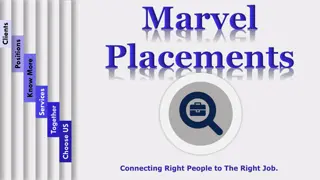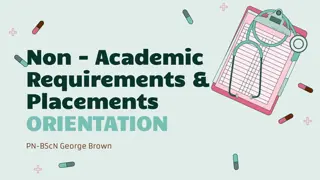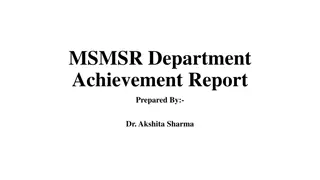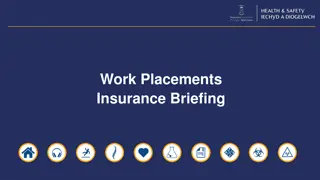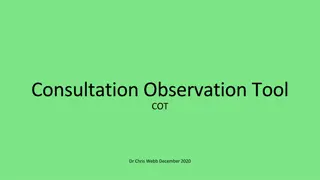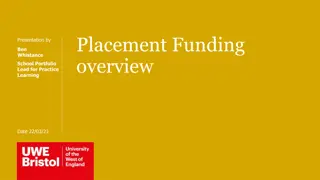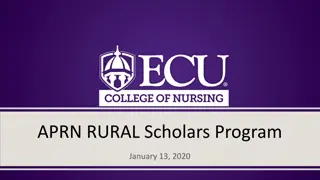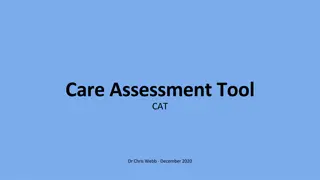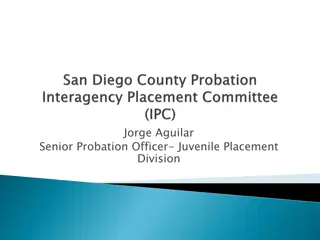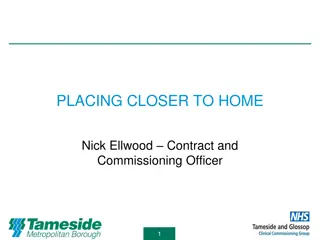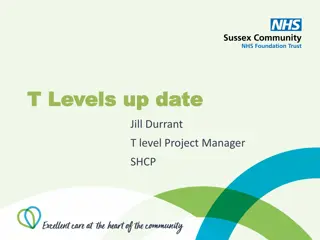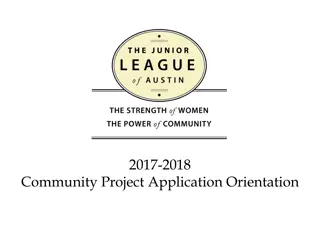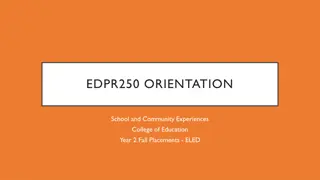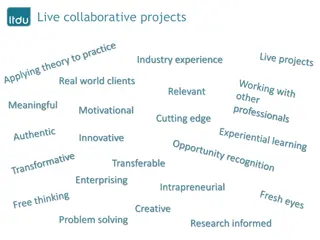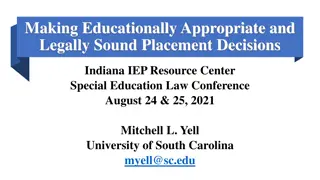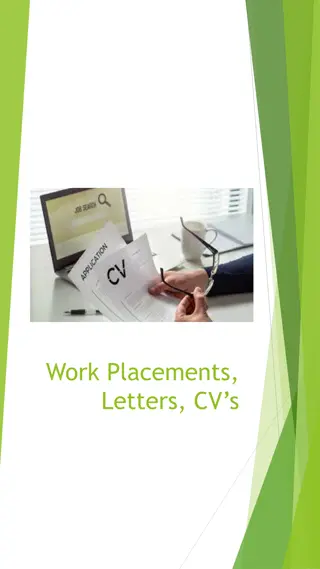Enhancing GP Training Through Community Placements
Community placements for GP trainees offer a unique opportunity to understand and address the diverse social factors affecting patients' health. Through interactions with third-sector organizations, trainees gain insight into local communities, contributing to a more comprehensive approach to healthcare beyond the traditional medical model.
Download Presentation

Please find below an Image/Link to download the presentation.
The content on the website is provided AS IS for your information and personal use only. It may not be sold, licensed, or shared on other websites without obtaining consent from the author.If you encounter any issues during the download, it is possible that the publisher has removed the file from their server.
You are allowed to download the files provided on this website for personal or commercial use, subject to the condition that they are used lawfully. All files are the property of their respective owners.
The content on the website is provided AS IS for your information and personal use only. It may not be sold, licensed, or shared on other websites without obtaining consent from the author.
E N D
Presentation Transcript
Training for purpose: Community placements for GP trainees An Introduction
Your work as a family doctor is determined by the make-up of the community in which your practice is based .GPs may need to take additional steps to understand the issues and barriers affecting their communities. (RCGP Curriculum 2019)
What are community placements? Allow trainees to learn about the communities in which they are working in and the third sector organisations supporting the community. ST1 GP trainees (or ST2 if this is their first GP post) will spend a minimum of two half days observing, shadowing and working alongside a community or voluntary organisation of their choosing, that is relevant to the community they are working in. Trainees will organise the placement themselves. The placements are to be completed in personal study mornings/afternoons or when there is no scheduled VTS session/HDR. Trainees may also use tutorial time if agreed with their trainer. It s an opportunity to get out of the surgery, to go into the community, to see how people live and to learn about what services are available to help people. (Scarborough trainee, 2020)
What are third sector organisations? Organisations that are not governmental (i.e. not the NHS, council etc) and not for profit (not businesses). Typically refers to charity or voluntary organisations. Examples of organisations that trainees have visited include: National charities, e.g. Age UK, Barnardo s Local charities, e.g. art groups, social groups, dementia groups, community allotments, exercise groups Regional organisations, e.g. Housing associations Organisations supporting specific groups such as such as refugees and asylum seekers, ethnic minorities, homeless people, sex workers, people with drug and alcohol problems or people with learning disabilities
Why have community placements ? Community orientation is a key competence in the RCGP curriculum Social prescribing is an increasingly important part of general practice Allows trainees to step outside the consultation room and get to know the community they are working in We need to be moving away from just using a medical model, we need to think about our patients as part of a community, with social factors impacting their health and the support out there to help people. (York trainee, 2020) This has helped me understand the local community that I work in and how social issues such as poor housing, problems with benefits, and social isolation can have an impact on mental and also physical health. It is difficult to manage this as a doctor as I can t provide support for these issues, so it s really good to see there is a service available to address these issues for people. (Sheffield trainee, 2019)
I shadowed the social prescriber linked to our practice, we visited four patients at home, and I got to see the all different challenges they were facing and the ways in which they could be helped and supported. In between patients we chatted about the different groups out there and how GPs can best refer. (York trainee, 2020) I spent my placement with an organisation supporting people with drug and alcohol problems, they were really welcoming and keen to explain what support they could offer, they d never had any one from the GP surgery visit before, so seemed pleased about that. They showed me round, explained their services and I sat in on part of a session. (Airedale trainee, 2020)
I spent time at a social group run by a hosing association, supporting people who are isolated and lonely. When I first arrived they seemed a little unsure about why I was there, but when I explained who I was and that I wanted to learn about what support they had to offer and who could access the group so that I could help signpost people in future, they thought it was a great idea. Everyone wanted to tell me their story of how they came to the group and how it helped them. (York trainee, 2020) I visited a community forum near to our practice, I had no idea about the huge range of groups and services available in our area, and neither did my GP colleagues. After spending time with the manager of the forum we decided to work together booklet to create a booklet with all the groups and services listed, so that the GPs, nurses and pharmacists could use it to direct patients. (Sheffield trainee, 2020)
Jacquelines story A video demonstrating the benefits of the third sector https://vimeo.com/283913323/2f718c6952 Credit to Dragon Cafe and Rosa Productions
Top tips on arranging a community placement Start early Think about the population your practice serves and what you would like to gain from the placement Initially talk to those around you, in practice, including your trainer, other GPs, nurses and reception staff and research online If possible, make contact with your social prescribing link worker, they will know about all organisations in the area Use the community placements guide you have been sent I would say start arranging early, find something that you're interested that is relevant to the community. Talk to the people in your practice, your trainer, the other staff, the social prescriber if you have one. (Wakefield trainee, 2020)
How will community placements be assessed? Reflective piece to be uploaded to your Eportfolio Present your experience and learning back to your VTS/HDR groups Feedback to your practice.
Summary of community placements Minimum of two half days spent with a community or voluntary organisation in your practice community. Will be required to complete a reflective piece. All trainees will be provided with a guide to community placements with advice and a draft email to send to organisations. Enjoy! Community placements allow you to step outside the consulting room and get to know the communities you are working in.






